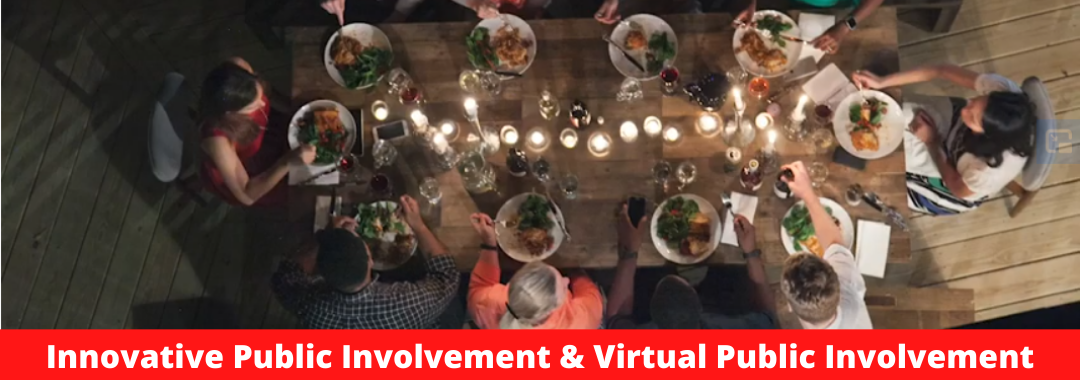FHWA promotes virtual public involvement and other innovative public involvement tools through its Every Day Counts-5 innovations. FHWA notes several benefits of a robust public involvement process that employs technology to bring public involvement opportunities to people. These techniques tend to be more efficient and cost-effective, help to accelerate the project delivery process by identifying issues early in the process, ensure that the needs and desires of community members are heard in a collaborative process, and improve project quality by reaching individuals who might otherwise not be engaged.
FHWA is developing a series of short videos highlighting virtual public involvement tools, as well as other innovative strategies, in use at state and local transportation agencies. Approaches in use by New Jersey Department of Transportation (NJDOT) and North Jersey Transportation Planning Authority (NJTPA) feature in several of these videos.
NJTPA used Set the Table, a meeting-in-a-box, to gather input from millennials for the agency’s long-range regional plan (Plan 2045). Individuals hosted small dinner parties for their peers (aged 18-30). Boxes, similar to pizza boxes, held snacks, and conversation cards on seven focus areas related to transportation. Twenty events were held, reaching over 200 individuals. Participants voiced an interest in staying involved in the planning process.
To supplement print and other media advertisement to gather public input for Plan 2045, NJTPA used online ads geo-targeted to the region. These ads invited people to participate in an online survey covering the Plan’s seven focus areas. The campaign reached 1.6 million people over six weeks and received a robust response. The agency found that this virtual engagement strategy not only reached people where they were, but helped to inform a large number of people about the transportation planning process and the agency.
In-person public engagement events continue to have real value. To encourage public involvement on the Pulaski Skyway rehabilitation project, NJDOT used pop-up outreach at the Liberty Science Center in Jersey City. During construction, lane closures on the highway would affect 35,000 regional commuters and local residents on a daily basis. Wishing to reach a local population, many of whom were unlikely to attend a community public involvement meeting, NJDOT brought the meeting to them. A booth presented information and displayed a piece of the deteriorating bridge to explain to children and adults the importance of the highway project.
In delivering these examples, FHWA emphasizes the need for transportation agencies to expand their outreach efforts to engage people in their everyday lives.

